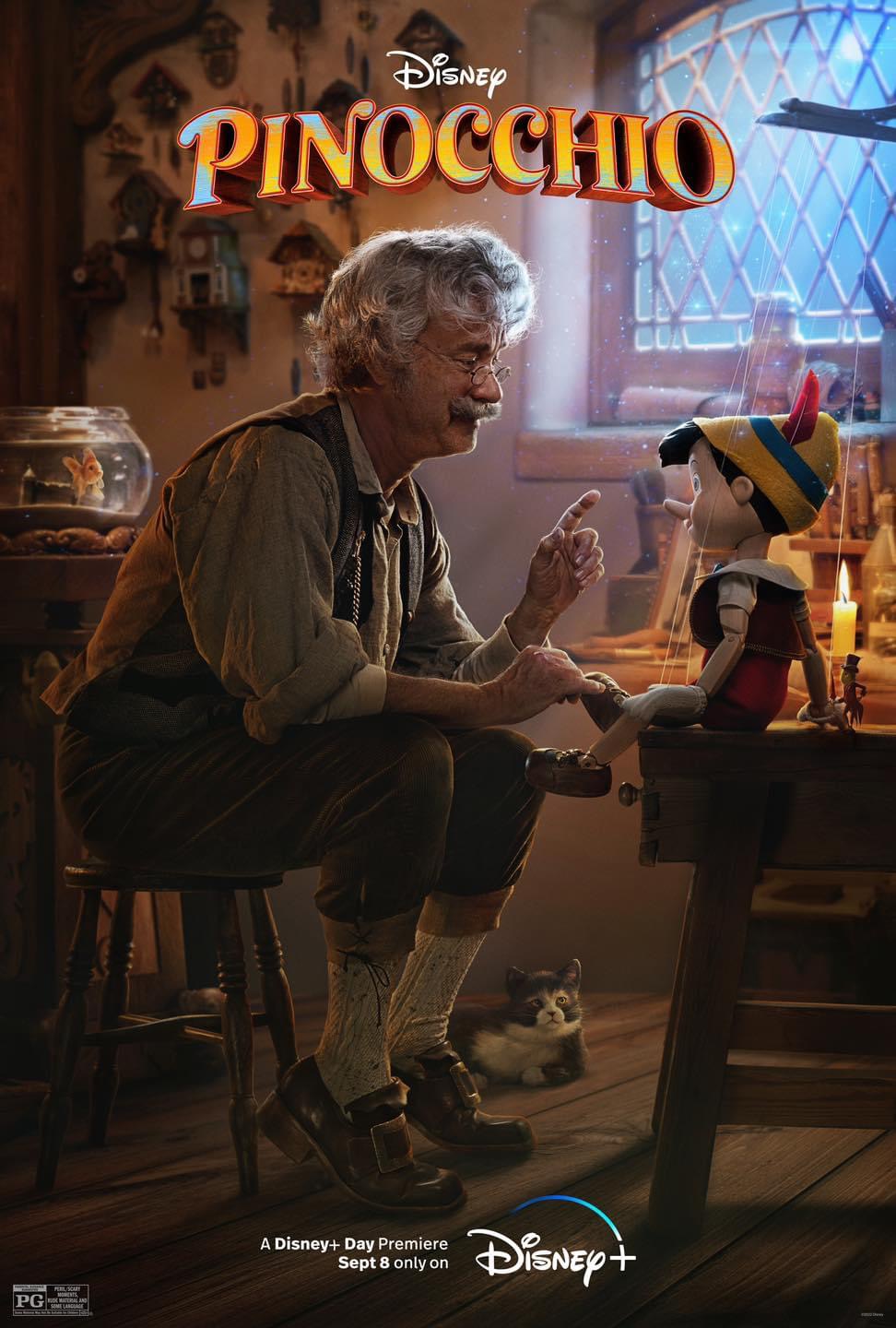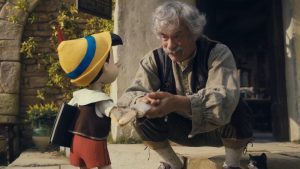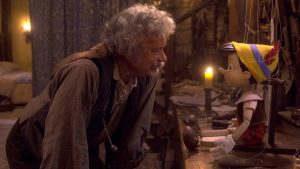Pinocchio (2022)

Guillermo del Toro’s Pinocchio (2022) presents a profoundly imaginative take on Carlo Collodi’s classic story, infusing it with emotional depth, gothic elements, and the unique magic of stop-motion animation. Co-directed with Mark Gustafson, del Toro’s version is anything but a typical children’s movie. Instead, it’s a deeply philosophical journey exploring themes of loss, love, mortality, and rebellion. The story, set in 1930s Italy during the rise of fascism, offers a grim and powerful reimagining that resonates with audiences of all ages.
Suggested videos for you:
Visual Style and Animation
From the start, the film dazzles with its meticulous stop-motion animation. Every detail of the puppetry and set design creates a sense of place and time that feels both whimsical and haunting. The characters and scenes come alive through the hands of animators who spent years painstakingly creating expressions, movements, and intricate details that convey so much more than dialogue. Unlike previous animated adaptations, this Pinocchio finds a balance between charm and darkness. The look of Pinocchio himself—carved from an old tree trunk, rough and imperfect—sets the tone, giving him a raw, almost primitive innocence.
The film’s aesthetic is also layered with darkly enchanting visuals, influenced by German Expressionism and del Toro’s signature gothic style. Fascist-era Italy is portrayed with grim realism, contrasting with the bright, almost magical presence of Pinocchio. The visual storytelling alone feels like a character, guiding viewers through Pinocchio’s journey with textures and colors that shift based on his experiences and emotional states.
Themes and Storytelling
Unlike the conventional narrative of the puppet wanting to become a “real boy,” del Toro’s Pinocchio asks what it means to be truly human. This version dives into existential and spiritual questions, especially around life and death. The story begins with Geppetto’s tragic loss of his son Carlo, an event that haunts him even as he builds Pinocchio in a drunken frenzy. This act of creation out of grief is where del Toro’s vision diverges sharply from past adaptations. Pinocchio’s birth is not joyful; it’s desperate, messy, and even a little grotesque, underscoring Geppetto’s deep mourning.
Pinocchio is portrayed as naive yet defiant, a puppet who questions authority and makes mistakes. His innocence clashes with the harsh world around him, and his journey becomes a form of rebellion against the conformity and obedience demanded by the fascist society. Geppetto’s attempts to teach Pinocchio about the world are shaped by his own traumas and regrets, leading to a complex and often strained father-son relationship. Unlike other adaptations that emphasize moral lessons, this film is less interested in shaping Pinocchio’s behavior than in celebrating his individuality, quirks, and curiosity.
Voice Cast and Performances
The voice cast in Pinocchio deserves special recognition. David Bradley, as Geppetto, brings raw vulnerability and pain to the role. His portrayal captures a father who’s struggling to reconcile his love for his lost son with the chaotic new presence of Pinocchio. Gregory Mann, who voices Pinocchio, delivers a performance full of wonder and defiance, giving the puppet a youthful and genuine energy. Ewan McGregor voices Sebastian J. Cricket, adding a humorous yet wise dimension that’s both comforting and insightful, serving as Pinocchio’s guide and confidant without being overly moralistic.
In addition, Cate Blanchett makes an unexpected appearance as Spazzatura, the monkey assistant to Count Volpe (a character with a role similar to Stromboli in the original story, voiced by Christoph Waltz). Blanchett’s performance is non-verbal yet expressive, capturing the tormented life of a creature caught between survival and loyalty. Waltz, meanwhile, delivers a sinister yet charismatic performance as Volpe, adding a layer of danger that’s more nuanced than a traditional villain.
Thematic Depth and Symbolism
What sets this film apart is del Toro’s ability to blend mythological and philosophical elements into the story. The concept of mortality is explored repeatedly. Pinocchio’s immortality initially seems like a blessing, but it becomes clear that it separates him from those he loves. Each time he dies, he meets Death, a creature voiced by Tilda Swinton, who serves as both a guide and a reminder of his otherness. These moments bring an eerie beauty to the narrative, as they reflect del Toro’s fascination with death as an inseparable part of life.
Pinocchio’s journey through Italy during fascism introduces yet another layer of meaning. The film contrasts Pinocchio’s free-spirited nature with a society that values obedience and conformity. At one point, he’s even forced into a fascist youth training camp, where he faces the grim reality of a world determined to turn children into soldiers. This setting isn’t just a backdrop but serves as a powerful metaphor for the loss of innocence, freedom, and individuality in a world dominated by authoritarianism.
Music and Score
The musical score, composed by Alexandre Desplat, enhances the emotional richness of the story. Del Toro and Desplat even incorporated original songs, sung by the characters themselves, that add a fairytale-like quality without disrupting the somber tone. The songs range from whimsical to deeply moving, and they fit seamlessly within the film’s structure, serving as moments of introspection for Pinocchio and other characters.
Conclusion
Guillermo del Toro’s Pinocchio is a masterpiece that transcends the limitations of genre and age. It’s a story that respects its audience by addressing complex, often uncomfortable themes through the innocence of a wooden puppet. Del Toro has taken a story we all know and infused it with his unique vision, transforming it into something haunting, beautiful, and thought-provoking. This Pinocchio is as much for adults as it is for children, as it challenges viewers to consider life’s fragility, the weight of grief, and the beauty of individuality.
Ultimately, Pinocchio (2022) stands as one of the most daring and artistic adaptations of the classic tale, a testament to the power of animation as a medium and to del Toro’s skill as a storyteller. The film’s combination of aesthetic mastery, emotional complexity, and philosophical depth makes it not only a significant entry in del Toro’s body of work but also a poignant reflection on the resilience and tenderness that defines the human spirit.











